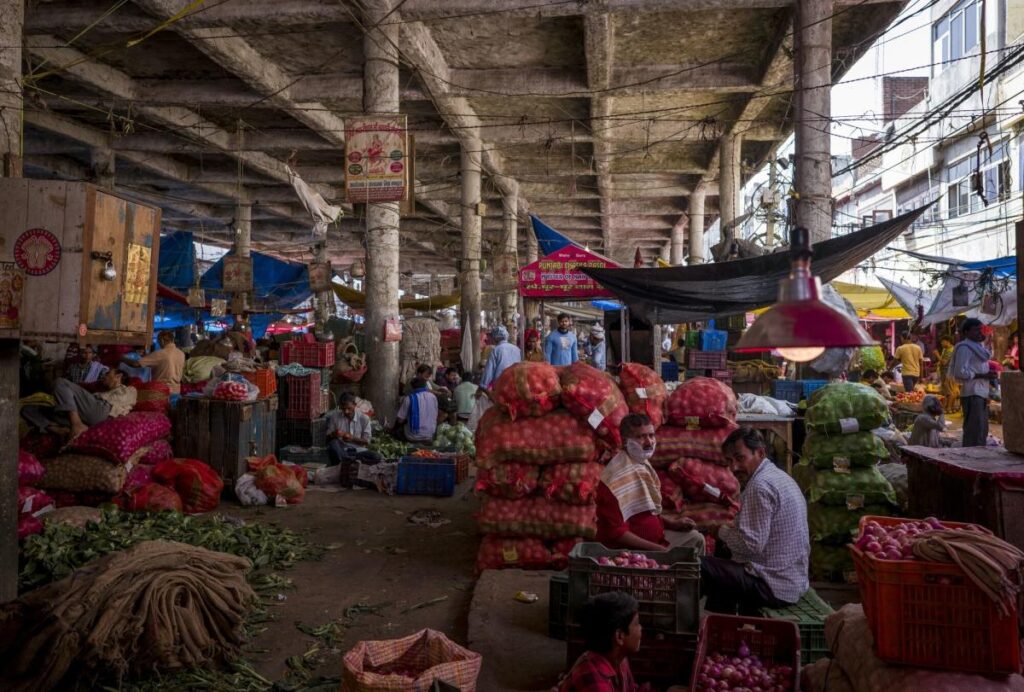India’s central bank Governor Shaktikanta Das firmly rejected a proposal from a senior government adviser to exclude volatile food prices from the nation’s inflation targets. At a recent forum organized by the Peterson Institute for International Economics in Washington, Das articulated that such a move would render the inflation target meaningless for the average consumer. He emphasized that food constitutes almost half of India’s consumer inflation basket, and thus removing it from consideration would obscure the reality of price levels as experienced by the population. For everyday citizens, it is the headline inflation—which includes food costs—that is most relevant and interpretable. Das conveyed strong concerns about the implications of altering inflation targets in a way that disregards food prices, asserting that it would not resonate with normal consumers’ understanding of economic conditions.
In recent months, inflation in India surged, primarily due to rising food prices, with vegetable prices alone experiencing a staggering 36% increase in September. This spike in food inflation led many economists to revise their expectations regarding interest rate cuts, despite a broader trend of easing monetary policies following reductions by the US Federal Reserve. Governor Das has repeatedly signaled a cautious stance on cutting rates, noting the complexities of current economic conditions. He labeled a potential cut as “very, very risky” and insisted on a need for a “durable descent” in price growth toward the central bank’s targeted level of 4%. This position underscores the RBI’s commitment to maintaining stability and not succumbing to pressures for quick monetary adjustments.
The proposal to focus on core inflation by stripping out food prices was initially posited by India’s chief economic adviser, V Anantha Nageswaran, in July. Nageswaran argued that food prices are influenced by external supply constraints, suggesting that traditional interest rate policies might not effectively address food-induced inflation. He raised concerns that utilizing short-term monetary policy tools on such inflation might be counterproductive. Nonetheless, this suggestion has provoked significant debate among economists, reflecting divergent views on the interplay between food prices and overall inflation dynamics in India.
Some economists, like Jayanth Rama Varma, a former member of the RBI’s rate-setting committee, have highlighted the absence of evidence linking rising food prices to broader inflationary trends in India. Even with substantial hikes in food costs, Varma indicates that these do not necessarily translate to increased prices in other sectors. In contrast, Sonal Varma from Nomura Holdings asserted that ignoring food in inflation calculations is impractical in a country where food items constitute 46% of the consumer inflation basket. This reinforces the reality that food prices have a significant and direct impact on the overall inflation landscape, thereby complicating the justification for excluding them from monetary policy considerations.
Das’s reaffirmation of the necessity of including food prices in inflation assessments positions the RBI as an institution keenly aware of consumer realities and economic transparency. As inflation remains a pressing concern for both policymakers and consumers alike, the notion of redefining inflation targets invites scrutiny about the adequacy of such measures in representing the lived experiences of everyday citizens. The complexities inherent in India’s economic structure necessitate caution and thorough analysis when contemplating adjustments to monetary policy frameworks that might appear disconnected from the fundamental drivers of price changes.
In conclusion, the ongoing debate surrounding inflation targeting in India highlights a critical intersection of consumer interests, economic policy, and the intricacies of price dynamics. With Shaktikanta Das firmly advocating for the inclusion of food prices in inflation measures, the conversation continues to evolve, revealing broader implications for how monetary authorities engage with public perceptions and economic realities. As India navigates through inflationary pressures, the central bank’s approach under Das’s leadership will play an essential role in fostering economic stability while addressing the pressing concerns of the population regarding rising costs.

